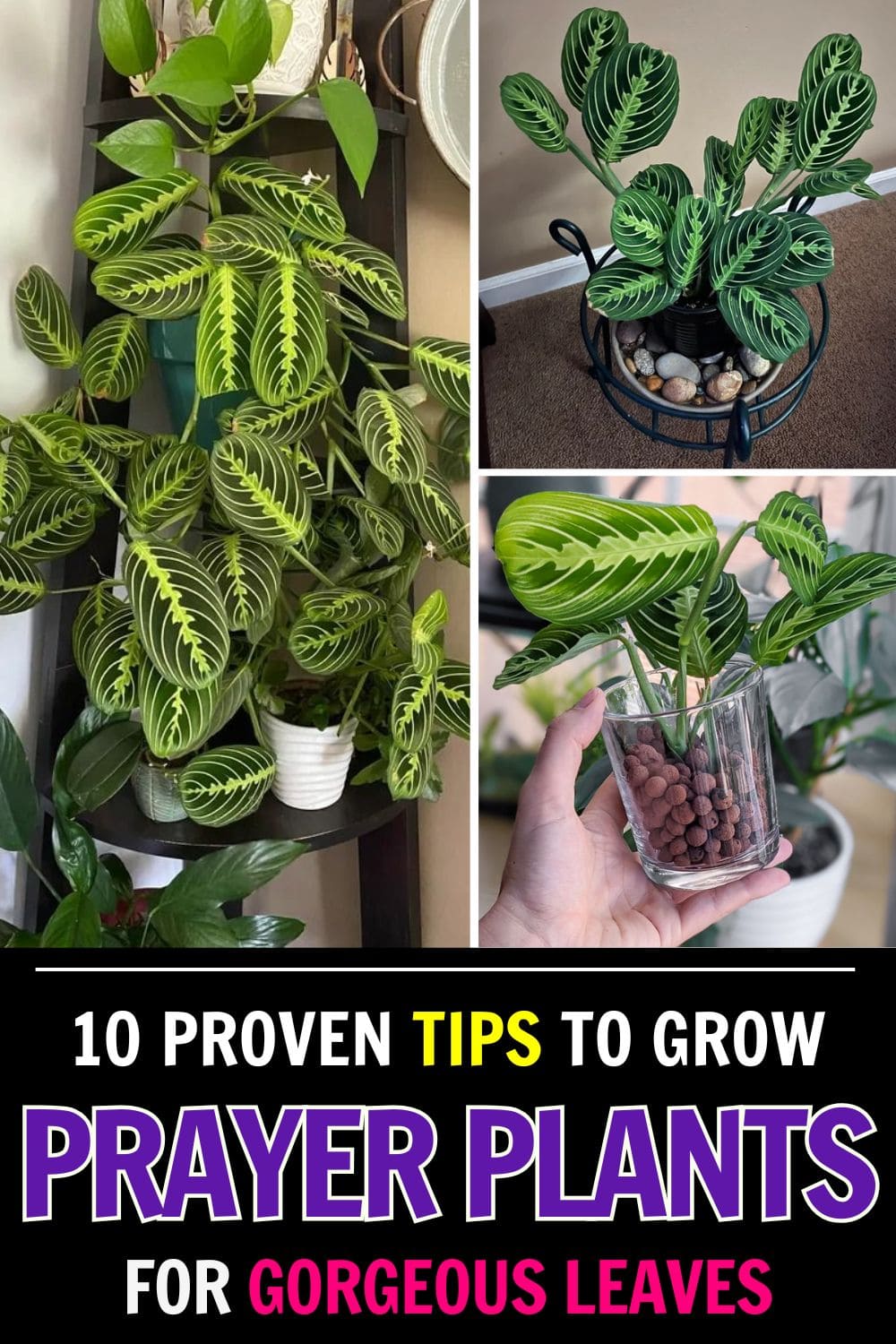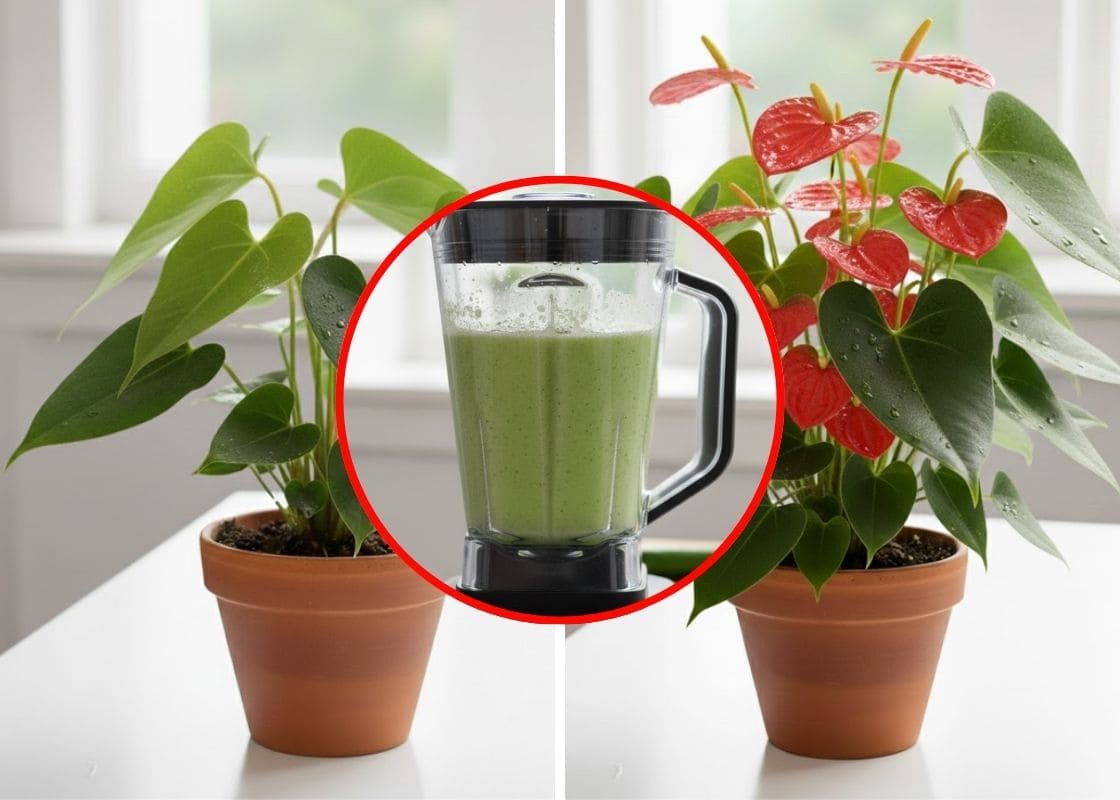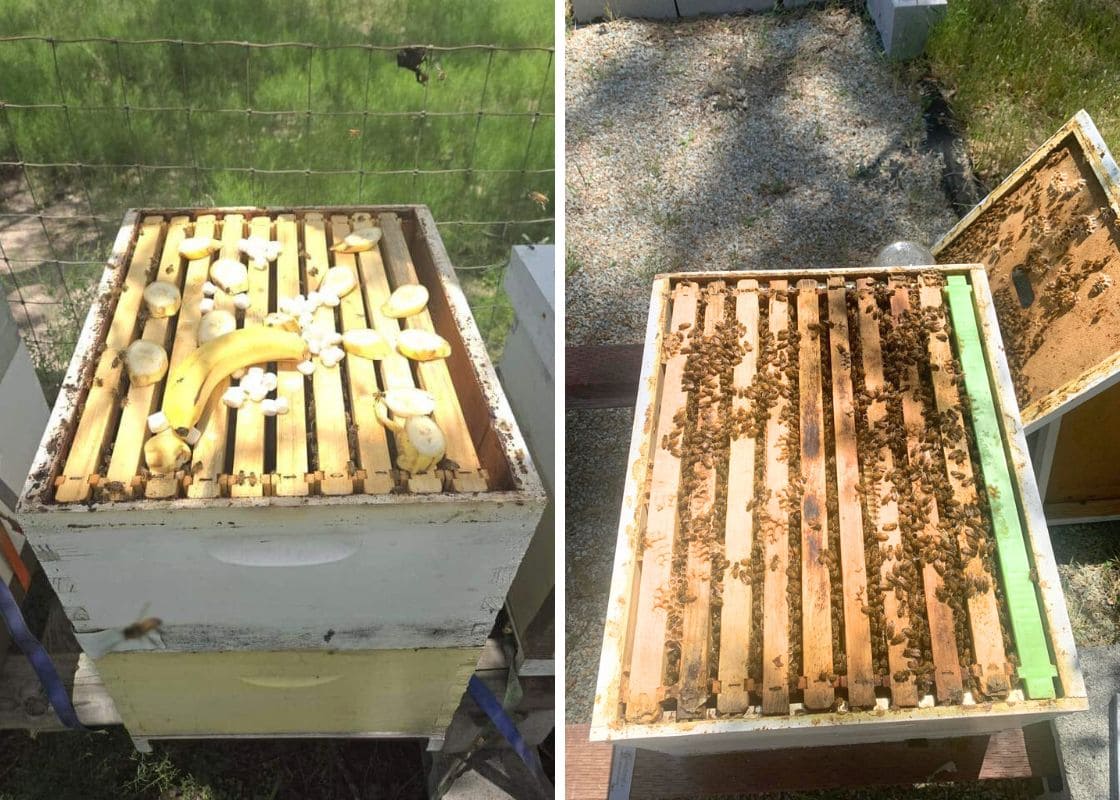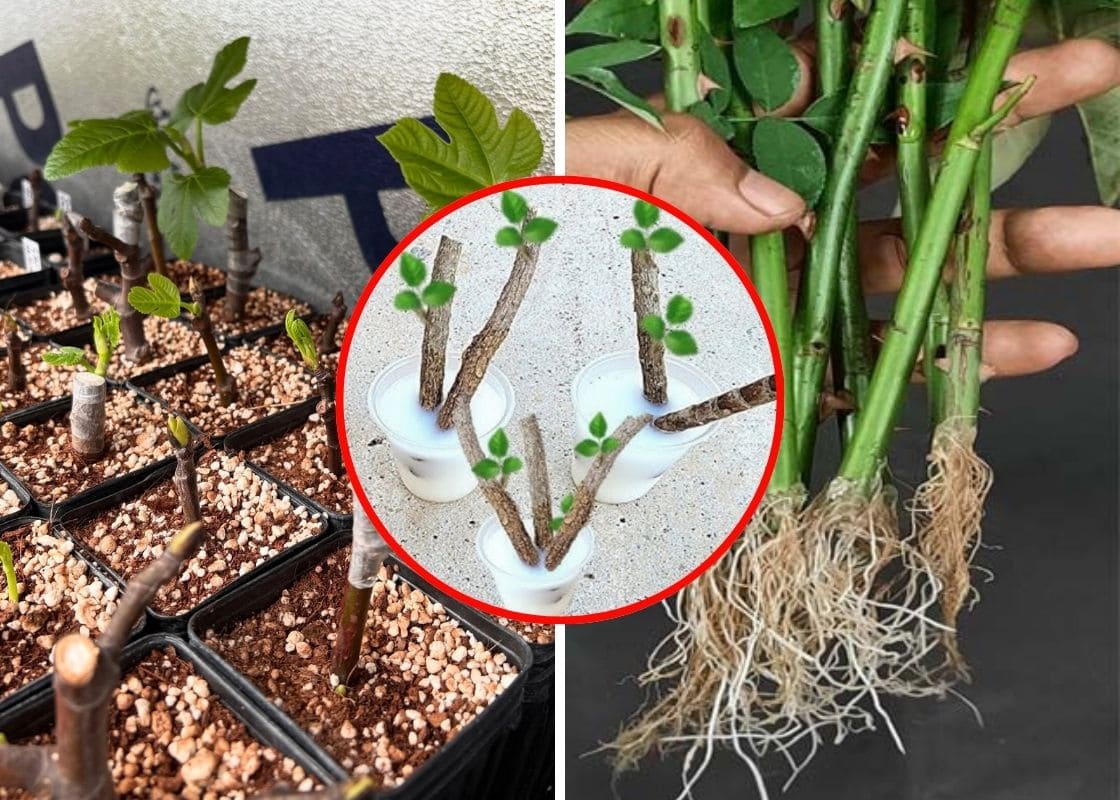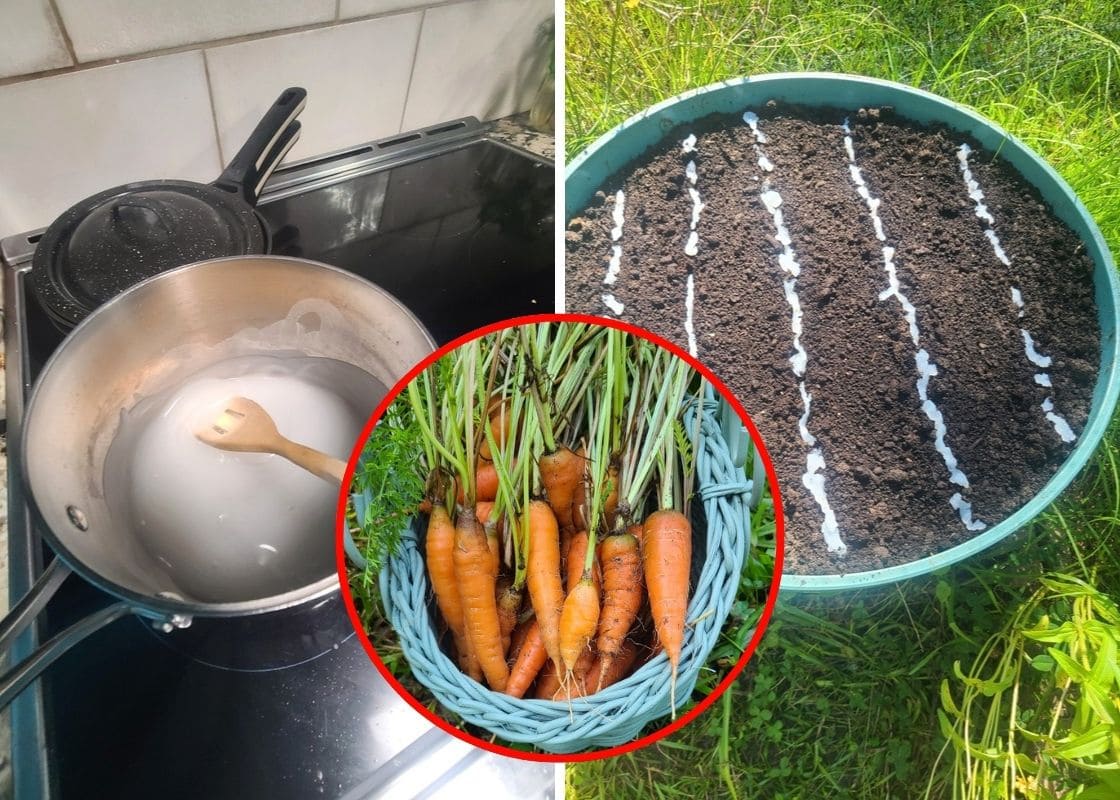There’s something almost magical about a prayer plant. Its patterned leaves look hand-painted, with veins of red, green, and cream running across soft foliage.
And then there’s the movement, leaves spread wide during the day, then fold up each evening as if the plant is quietly saying its prayers.
This little ritual makes the prayer plant feel alive in a special way. But behind the beauty is a plant that can be a little particular.
Native to the damp, warm understory of Brazilian rainforests, prayer plants crave steady care that mimics their natural home.
When you give them what they love like humidity, soft light, rich soil, and gentle feeding, they reward you with vibrant color and lush, healthy growth.
Let’s walk through ten proven tips to help you grow a prayer plant that truly shines.
1. Provide Bright, Indirect Light
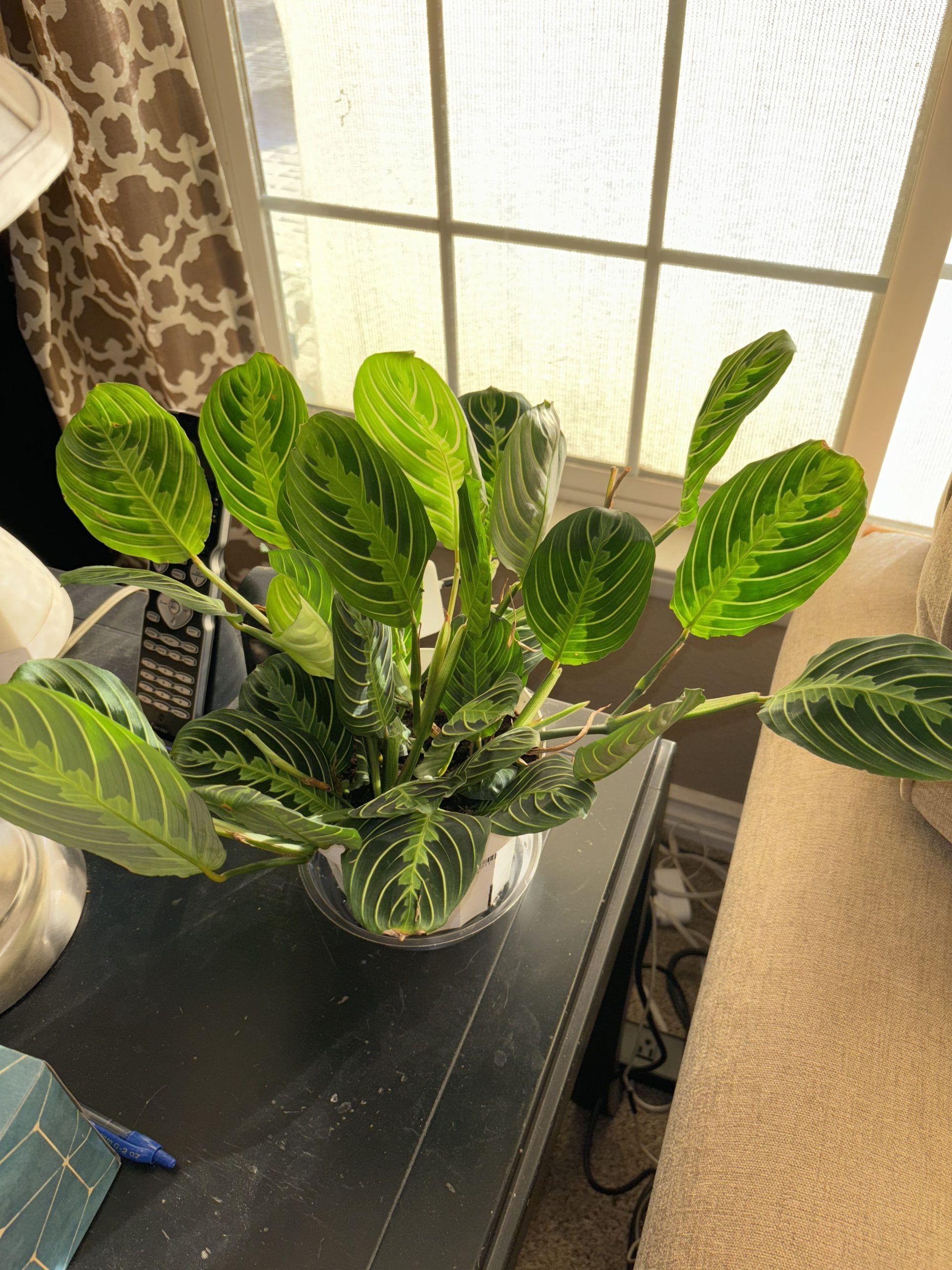
Prayer plants love light, but not the harsh kind.
In nature, they grow beneath the forest canopy, shielded from direct sun. Indoors, aim for bright but filtered light.
An east-facing window where they get morning sun or a north-facing window with steady brightness works beautifully.
Avoid hot south or west windows unless you use sheer curtains.
Too little light causes dull, slow growth, while too much bleaches or scorches their patterned leaves.
2. Keep the Soil Evenly Moist
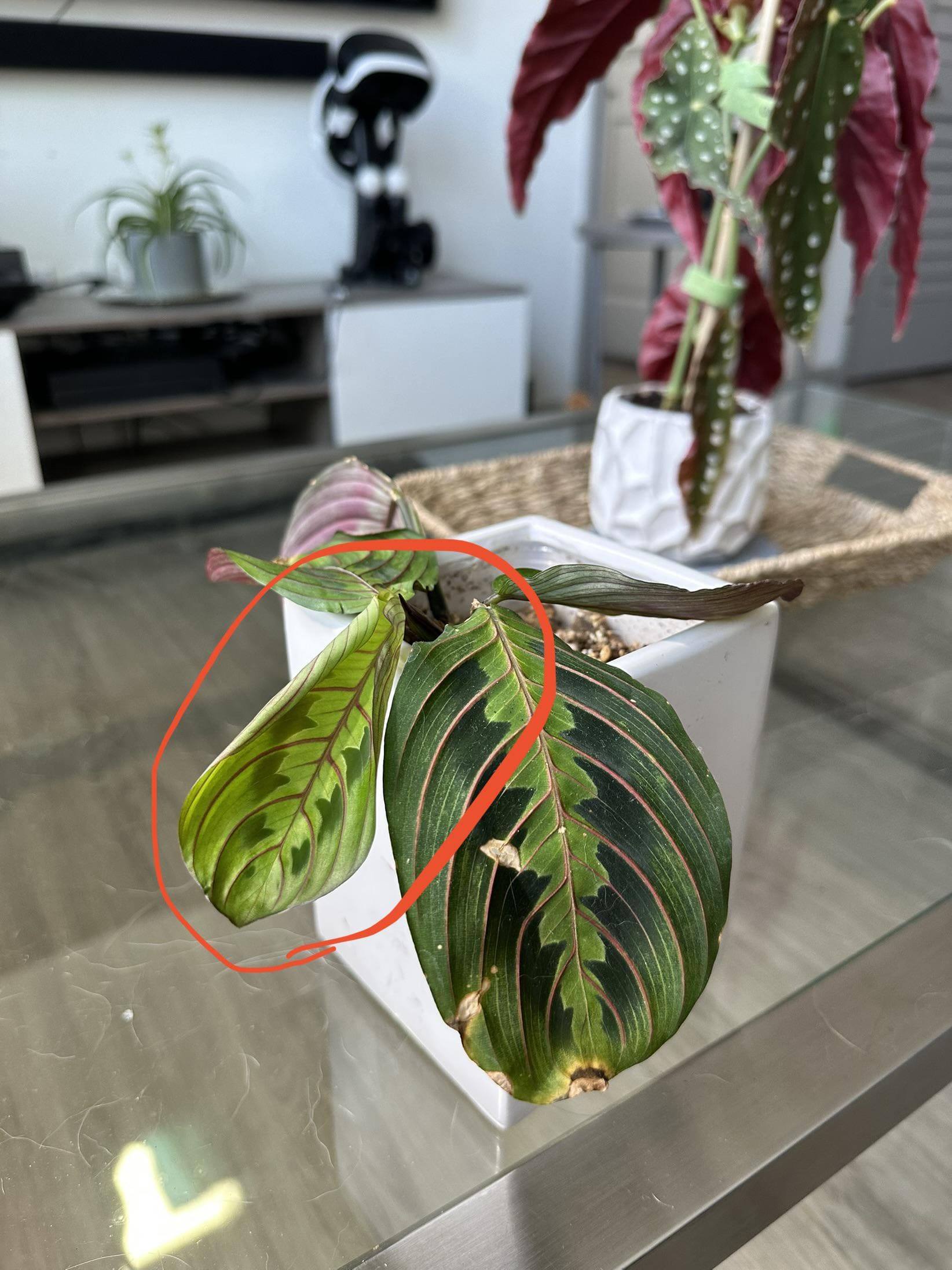
These plants don’t like swings between soggy and bone dry. The trick is to maintain soil that is evenly moist.
You should water when the top inch feels dry. Always use a pot with drainage holes, because sitting in stagnant water leads to root rot.
If you’ve struggled with crispy leaf edges, the culprit might be your water quality.
Tap water with fluoride, chlorine, or hard minerals is harsh on prayer plants. So, use distilled, rainwater, or filtered water for the best results.
3. Give Them the Humidity They Crave
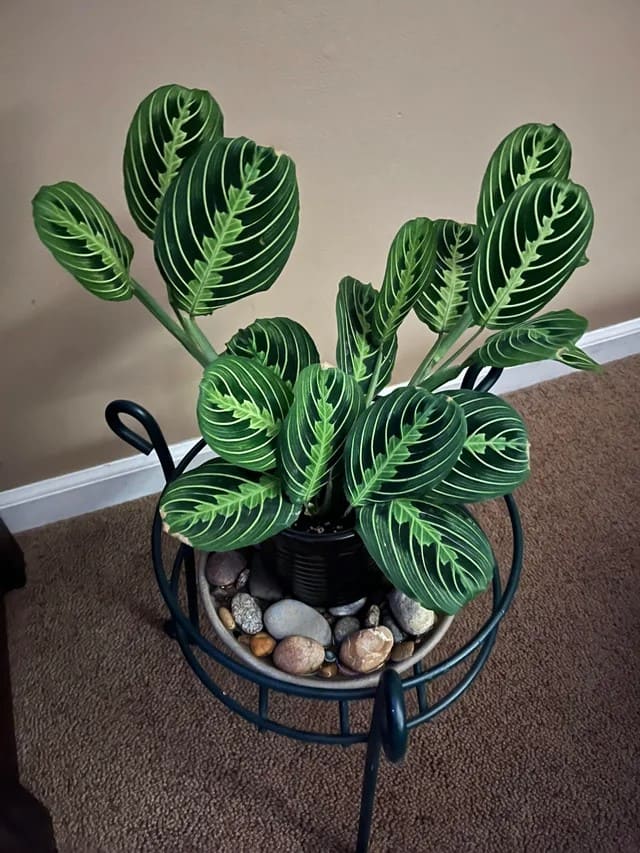
Prayer plants thrive in humidity levels of 60-70%. In a rainforest, they’re surrounded by constant moisture in the air, so our dry homes can feel like deserts to them.
A simple pebble tray under the pot, grouping several plants together, or running a small humidifier can make a huge difference.
If your leaves curl or brown at the edges, it’s a sign the air is too dry.
In winter, when heating systems run, extra humidity becomes even more important.
4. Use a Well-Draining, Rich Soil Mix
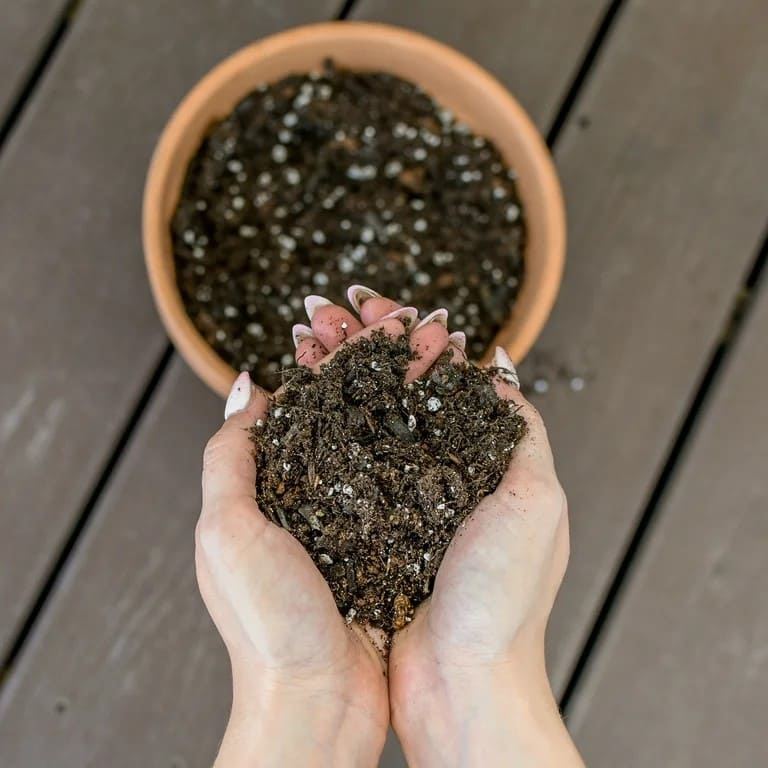
Prayer plants don’t like heavy, compact soil. Their roots need moisture that stays consistent, but plenty of oxygen, too.
A good starting mix is 40% peat moss or coco coir, 30% perlite or pumice, and 30% orchid bark or leaf mold.
The peat or coir holds water evenly, while the perlite and bark keep the mix fluffy and breathable.
If you want to enrich it further, add a handful of worm castings or compost for gentle nutrition.
Specially, avoid pure garden soil or dense potting soil as these tend to suffocate the roots and cause yellowing leaves.
5. Fertilize Lightly During Growth
Prayer plants aren’t heavy feeders, but they do respond beautifully to regular, gentle fertilizing.
During spring and summer, when the plant is actively producing new leaves, use a balanced liquid houseplant fertilizer (10-10-10 or 20-20-20 NPK).
The key is dilution, you should mix it to ¼ strength every 2 weeks or ½ strength once a month. This keeps nutrients flowing without overwhelming the roots.
In fall and winter, skip fertilizer or feed only once every 6-8 weeks, since the plant slows down.
If you’d rather go organic, use worm casting tea or compost tea every 4-6 weeks for a mild boost.
Plus, watch the leaves closely: deep green and bold patterns mean you’re feeding just right, while brown tips or leaf burn are signs you need to cut back.
6. Maintain Warm, Stable Temperatures
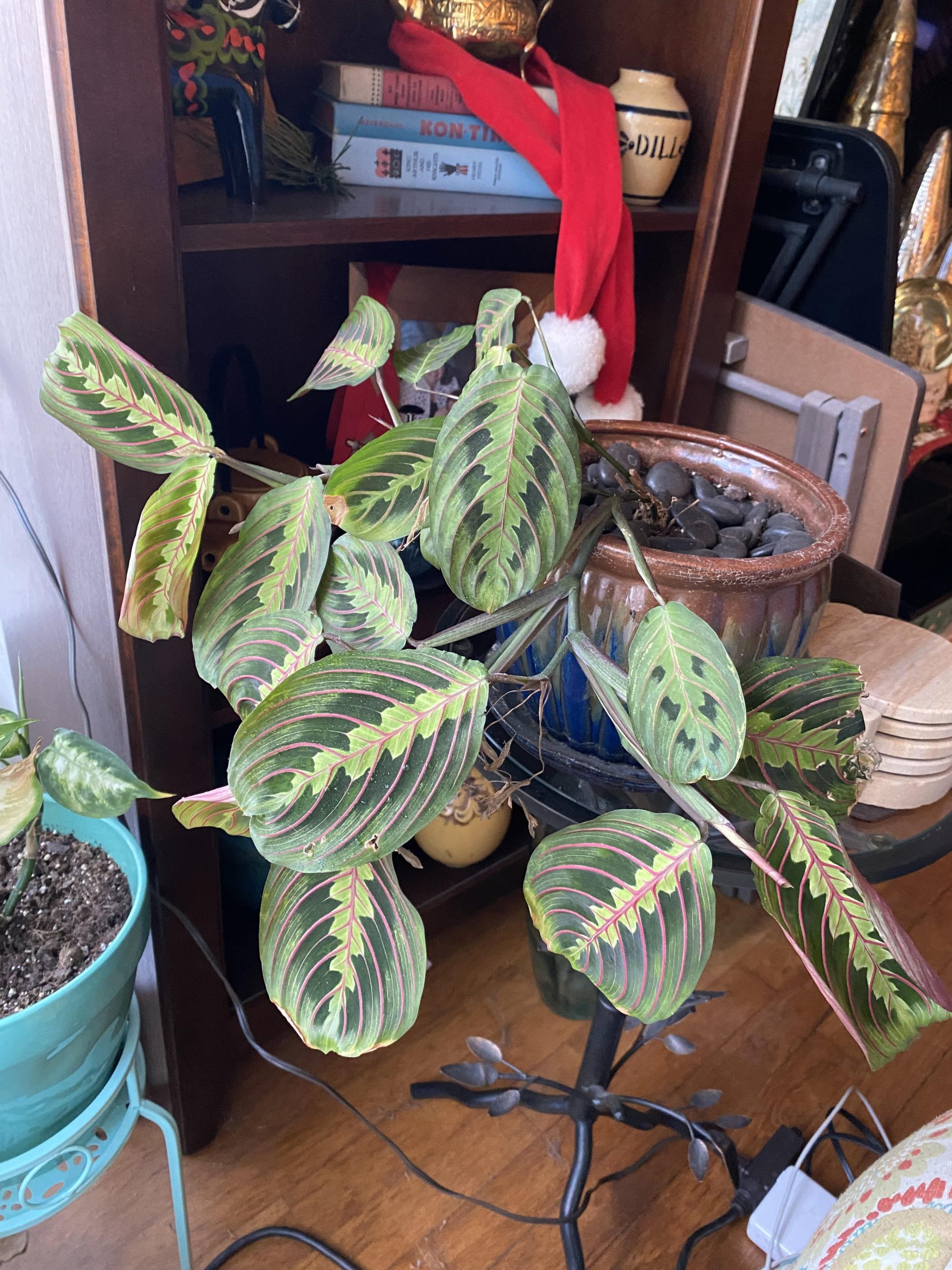
As tropical natives, prayer plants love warmth. Keep them between 65-80°F (18-27°C).
Sudden cold drafts, heating vents, or air conditioners will stress them quickly.
Don’t place them near doors that open to the outside in winter. A stable, warm environment encourages healthy root activity and lush foliage.
If the leaves start to droop or growth slows unexpectedly, check the temperature around your plant’s spot.
7. Prune to Encourage Fullness

Over time, older leaves may fade or stems may stretch. Don’t be afraid to trim them back. . A light trim every few months helps maintain shape and prevents legginess.
Pruning encourages bushier, fuller growth, giving your plant a compact and lush appearance.
You can even propagate the cuttings in water or soil to grow new plants.
8. Clean and Mist the Leaves
The beauty of a prayer plant is in its patterned leaves with red veins, herringbone stripes, or speckles depending on the variety.
Dust can quickly dull their vibrancy. So, wipe the leaves gently with a damp cloth every couple of weeks.
Occasional misting helps too, especially if the air is dry, though misting alone won’t replace true humidity.
Clean leaves also photosynthesize more efficiently, helping your plant use light and fertilizer better.
9. Repot Every 1-2 Years
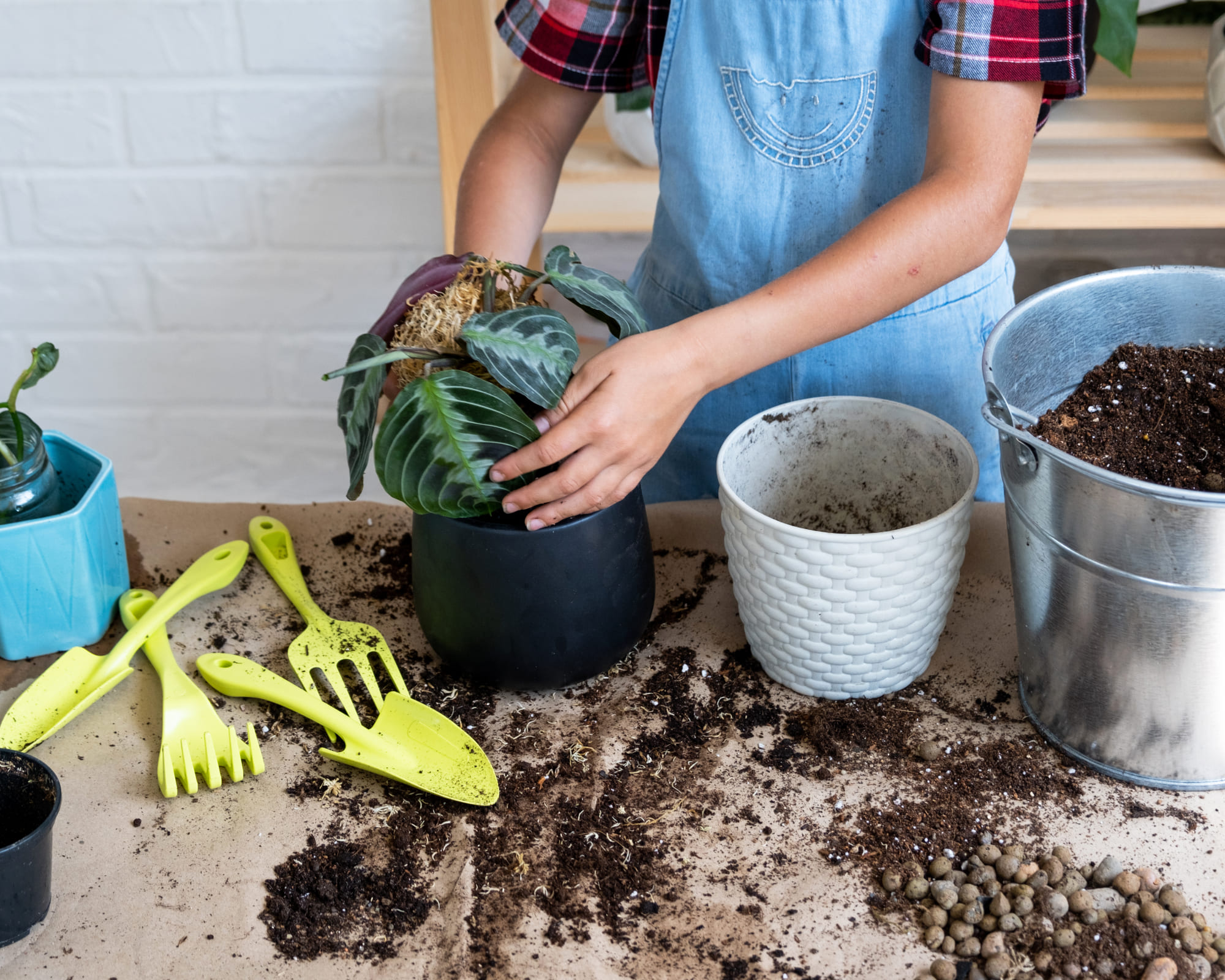
Prayer plants don’t mind being slightly root-bound, but repotting every year or two gives them fresh soil and space to spread.
Spring is the best time, when growth is active. You choose a pot just one size larger to avoid overwatering issues.
Fresh soil renews nutrients and improves structure, making it easier for roots to expand and support new growth.
10. Observe Prayer Plant’s Movements
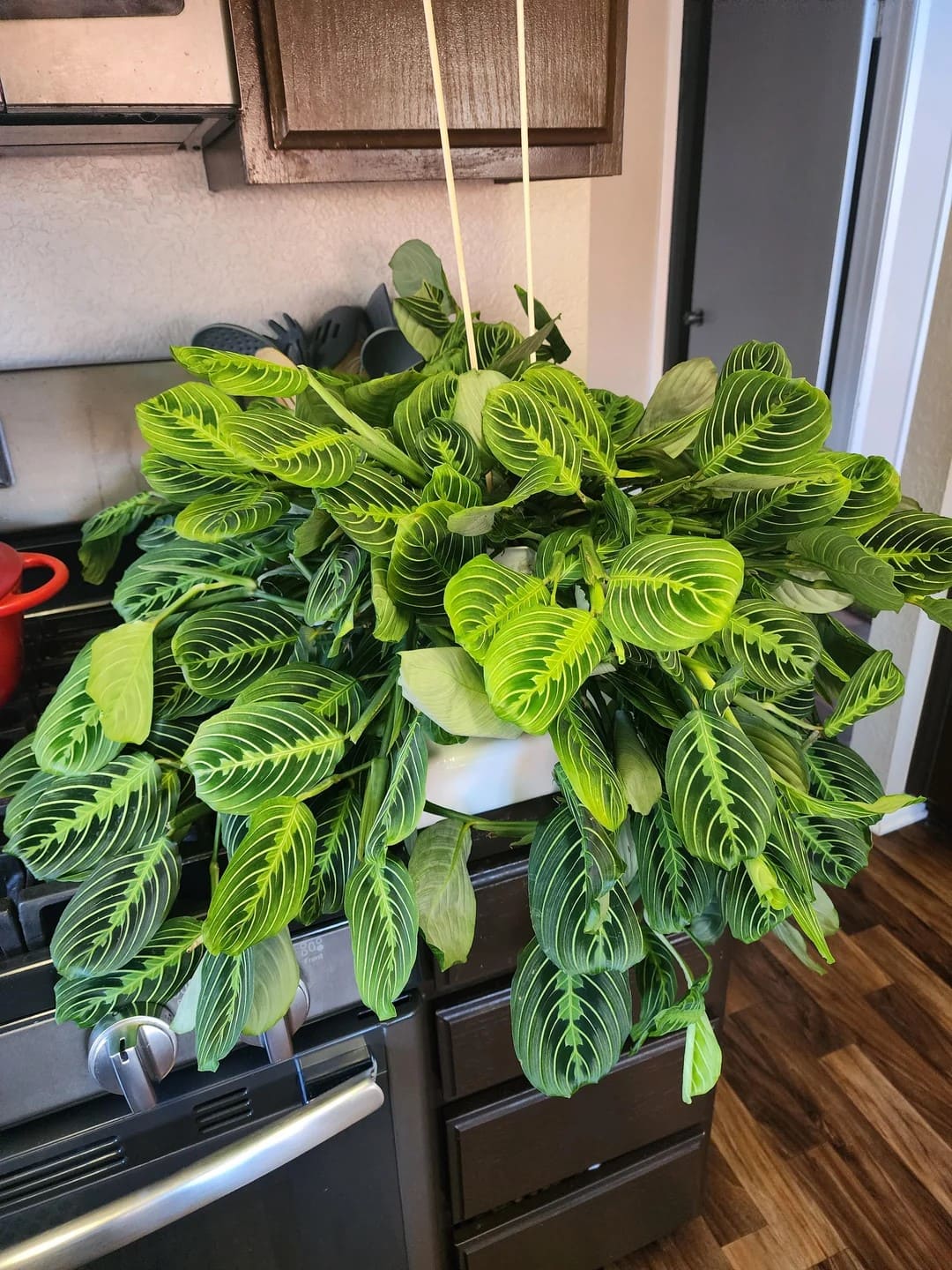
One of the joys of owning a prayer plant is watching its daily rhythm.
In the morning, leaves spread open wide to soak in light. At night, they fold upward as if in prayer.
If your plant stops moving, it’s a subtle sign of stress. It might be too dark, too dry, or lacking humidity.
By paying attention to these movements, you can catch problems early and adjust care before damage sets in.
Read more: 20 Indoor Plants For The Living Room To Dress Up Your Space
